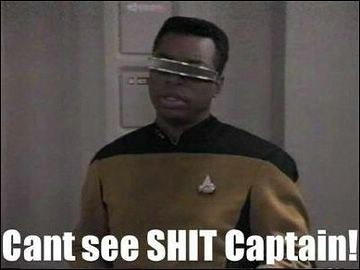Transcription:
Audio Right + Composite Video
Composite Video
Audio Right + Audio Left
Thank you. Guess I must be a HDMI kid, who would have known.
Audio Right + Composite Video
Is that the guy that cut his ear off?
Vincent van Gogh, yes.
Pretty sure Van Gogh wasn't deaf in that ear though.
Things probably sounded weird there though. Lots of whooshing.
Definitely. A piercing in my conch, was enough to give me some mildly annoying tinnitus for years.
Can't imagine if my ear was just...gone.
gamerz like me:

laughs in european
I present to you: the Scart.
Our gaming consoles came with it.
We were clueless the first time we hooked up our N64 at gran-gran, since the old TV did not have a Scart connector, but we figured out that the Scart’s colored cables go in there.
Scart was amazing. RGB, composite, component, audio. All in one cable. Granted that cable and connector were enormous, but one cable nonetheless.
SCART was terrible.
Theoretically it had all that in one cable, in practice it never did. You’d usually have 3-4 SCART ports on a TV, but not all ports accepted our output the same signals. There was no way to tell from the outside what the output or input from a SCART port so you either had to try different port combinations or look it up in the manual (if you had one). Most TV’s had one port that accepted s-video, on that accepted RGB and they usually accepted composite on all ports.
Worse, not all cables had all 21 connections. If you were lucky you could tell because not all pins on the connector would be there (but this wasn’t necessary the case).
Usually there was also one port on a TV that output the video from the tuner. This was used for analog pay TV decoders. You would hook it up to that SCART port and it would get the scrambled video from the TV and return the descrambled video over the same port.
Also, due to the size and design of the connector it was almost impossible to insert it blindly. Inserting one into the back of one of those enormous CRT television was always a challenge.
This is actually a pretty helpful diagram for when I inevitably forget which color does what
Not even the SCART kids get it.
What's SCART kids?
Ahh SCART, the beafiest connector. Feels like you're plugging/unplugging a nuclear power plant.
I see your SCART, and I raise you one Monsters Inc. Scream Extractor power plug.
VGA was so much better.
The composite video output commonly seen on 1980s microcomputers couldn't display high-resolution text without severe distortion making the text unreadable. This could be seen on the IBM PCjr, for example, where the digital RGB display it came with could display 80×25 text mode just fine, but if you connected a composite video display (i.e. a TV) instead, 80×25 text was a blurry, illegible mess. The digital video output was severely limited in color depth, however; it could display only a fixed palette of 16 colors, whereas the distortion in the composite video could be used to create many more colors, albeit at very low resolution.
Then along came the VGA video signal format. This was a bit of a peculiarity: analog RGB video. Unlike digital RGB of the time, it was not limited in color depth, and could represent an image with 24-bit color, no problem. Unlike composite video, it had separate signal lines for each primary color, so any color within the gamut was equally representable, and it had enough bandwidth on each of those lines to cleanly transmit a 640×480 image at 60Hz with pretty much perfect fidelity.
However, someone at IBM was apparently a bit of a perfectionist, as a VGA cable is capable of carrying an image of up to 2048×1536 resolution at 85Hz, or at lower resolutions, refresh rates of 100Hz or more, all with 24-bit color depth—far beyond what the original VGA graphics chips and associated IBM 85xx-series displays could handle.
Also, the VGA cable system bundled every signal line into a single cable and connector, so no more figuring out which cable plugs in where, and it being so future-proof meant that, for pretty much the entire '90s, you could buy any old computer display and plug it into any old computer and it would just work.
Pretty impressive for an analog video signal/cable/connector designed in 1987.

I remember Christmas day getting a ps1 pulling out the cables and realizing that my tv didn't have the right ports and had to wait a couple of days to play it since the stores where closed and I couldn't buy one of those cables that connected to where the cable tv goes . Then getting stuck at the first section of tomb raider 2 for the next couple of days ...
This is RCA. Wasn’t composite early HD with RBG-RW?
You're thinking of component. The two are (or were) frequently mixed up.
Yep, you’re right! Ah the memories.
A good way to remember is that RGB on the same wire is a Composite signal whereas when they have their own cables they are sent as individual Components.
Panel 4: Hellen Keller / Empty Square
I have no clue...
Yellow is video, red and white are left and right audio
Van Gogh Entertainment System
Hilarious
Memes
Rules:
- Be civil and nice.
- Try not to excessively repost, as a rule of thumb, wait at least 2 months to do it if you have to.
